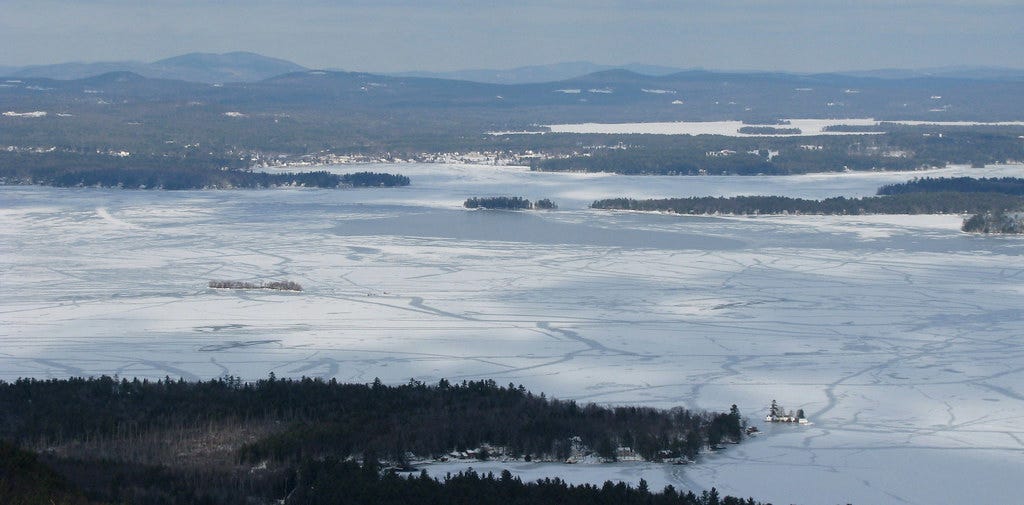“Unusual hiking” is more than just a bunch of physical venues where you can go for a great hike. Timing can be the difference between a standard issue hiking experience, and the sort of ramble that earns you skepticism from onlookers. For years, I’ve tried inviting friends to go and poke around Cape Cod during mud season, when the soggy shores are bursting with musky aromas and the sounds of new life, and the looks I’ve gotten are the sort of looks I might give a friend who suggested experimenting with cannibalism. Even iconic hiking destinations can have this rigid seasonal currency.
There’s a rather tragic example of this in central New Hampshire. Those of you who’ve spent any time on Lake Winnipesaukee—say…boating around with Mitt Romney—are probably familiar with Mount Major. Looming over Old Winny (that’s not the lake’s actual nickname: I just made it up), this 1,786-foot peak has historically been used as a natural observation deck for Lake Winnipesaukee. If you’re used to experiencing a body of water from ground level, the chance to take in a god’s eye perspective of the waterscape is irresistible. And since the trails to the top of Mount Major fall within the moderate range of New England hiking, Mount Major gets a lot of visitors each summer and fall, and the mountain takes a beating. Trails are often strewn with litter, and graffiti has appeared on summit rocks. Volunteers from New Hampshire trail stewardship groups gather several times each year to remove the trash and the spray paint. But still, it’s a literal uphill battle that just seems to escalate every summer.
If you want to experience Mount Major in a more peaceful, unadulterated form, the time to go there is winter, when the besieged mountain is covered in snow and ice.



